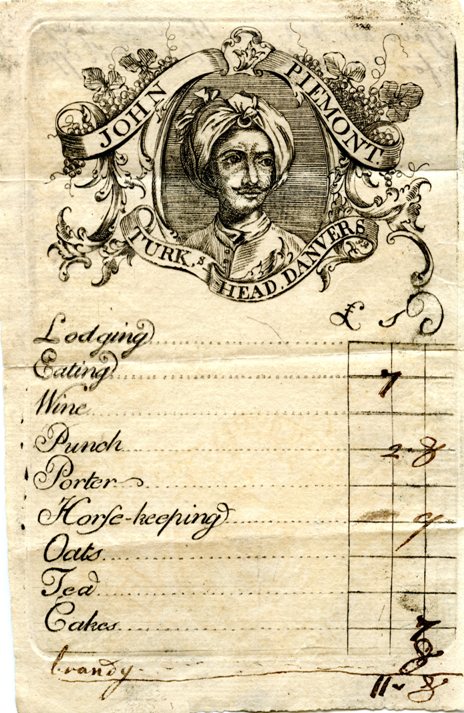“To consult him on her Sad Case, of her Breast”
These extracts come from the diary of the Rev. Ebenezer Parkman of Westborough, which is all transcribed and analyzed at its own website. These extracts were found and organized by Ross W. Beales, Jr., Professor Emeritus at Holy Cross, and his colleagues.
Parkman knew of John Pope by May 1772, when he wrote of “Mr. Smith being at Boston under the operations of Mr. Pope (a Quaker) for the Cure of his Cancer.”
However, Pope’s skills became personal when Parkman’s oldest daughter Mary (Molly), who had married the Rev. Eli Forbes (1726–1804, show here) of Gloucester in 1752, developed some form of breast cancer.
On 10 Jan 1775, Parkman wrote in his diary:
My Son Forbes and his Wife came from Cape Ann, but last from Mr. Brooks’s at Medford.... My Daughters Trouble in her Breast somewhat mitigated, by Methods used by Friend Pope of Boston. Thanks to the Supreme Healer!The month of March brought lots of news, not all good.
[13 March:] Mr. Forbes and my Daughter Set out on their Journey to Boston, designing to go to Mr. Pope, to consult him on her Sad Case, of her Breast. . . .Parkman went home, so the next news came by post on 15 April:
[22 March:] A Second Letter from my Son Forbes at Boston, that his Wife has gone through a Second Dressing by the hard Plaister and “by appearance these two have en[crusted?] the Schirrous Tumor about 1/4 of an inch. This dead mass must be separated from the live Flesh by digestive lenient Dressings before another hard Dressing is applyed: which will require a Week or ten Days.” . . .
[24 March:] Received another Letter from Mr. Forbes, dated the 20th…that “moment” whilst She was actually “under the painfull Operation of the 2d hard Plaister, and is as full of pain as She can well bear, though She endures (he writes) with more patience and fortitude than I feared. The Doctor says all Things work very kindly, and he doubts not with the Blessing of God he shall be able to effect a Cure: but will require some time, at least two Months.
[“]At present she is extremely agitated. Last Night she had no sleep, and this Night (Sabbath 2 o’Clock) She has been much worse -- but by the help of an Anodyne she gets a little sleep—hope She will be supported and carryed through—I am encouraged, but verily Sir, it is hard Work—and we hope in God.”
“Six o’Clock in the Morning. We have got through the Night. It has been pritty distressing, though through the great Goodness of God mine and your dear Molly has had several refreshing Naps of Sleep, and is now Comfortable—and does not expect to have any more of these hard Plaisters for a Week or ten Days, and I hope the worst is past. However, Sufficient to the Day is the Evil thereof.” . . .
[28 March:] Put up at [Joshua] Bracketts [tavern]: hastened to Samuels to see Mrs. Forbes. She was under the lenient Plaister—was calm and easy. I saw the sore dressed. . . .
[29 March:] Mrs. Forbes has Comfort, and is cheerfull. We lodged there.
A Letter from Mr. Forbes (by Ripley, who is come to us from Boston and Cambridge) that on the 13th the Remainder of the Cancer in my Daughters Breast came out in a Body, near of the Bigness and Shape of a Sheeps Kidney—the Breast in an healing way. All Praise and Thanks to the glorious God our Healer!Four days later, war broke out, cutting off Boston from the countryside.
TOMORROW: Can this patient be saved?





